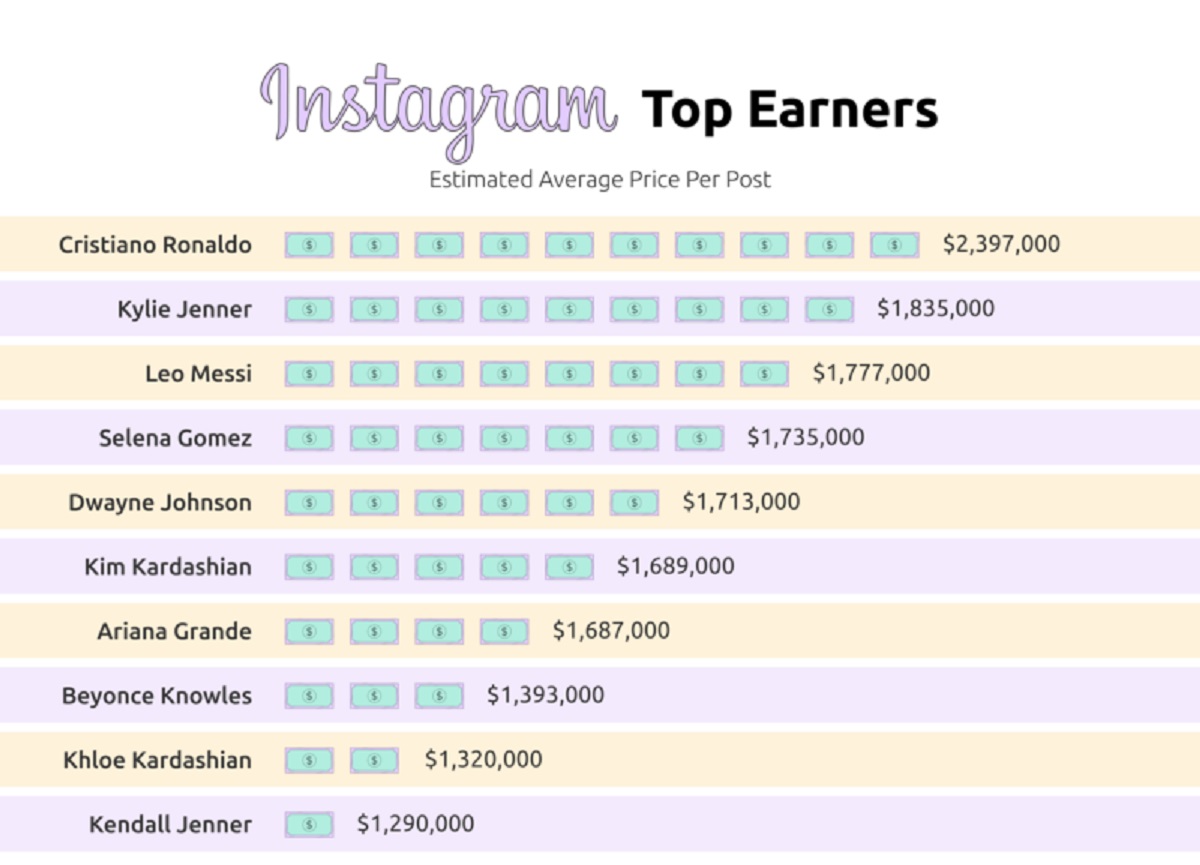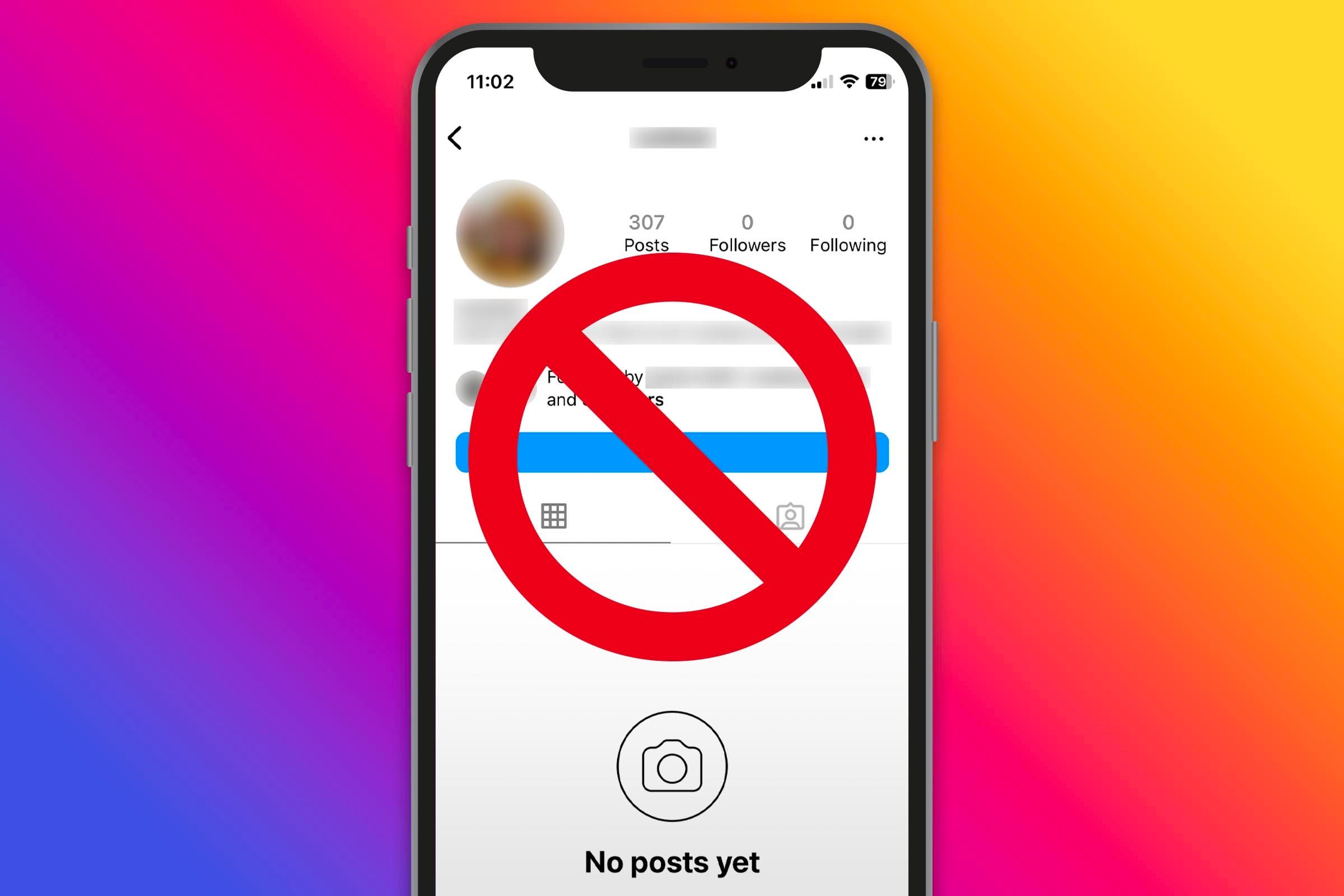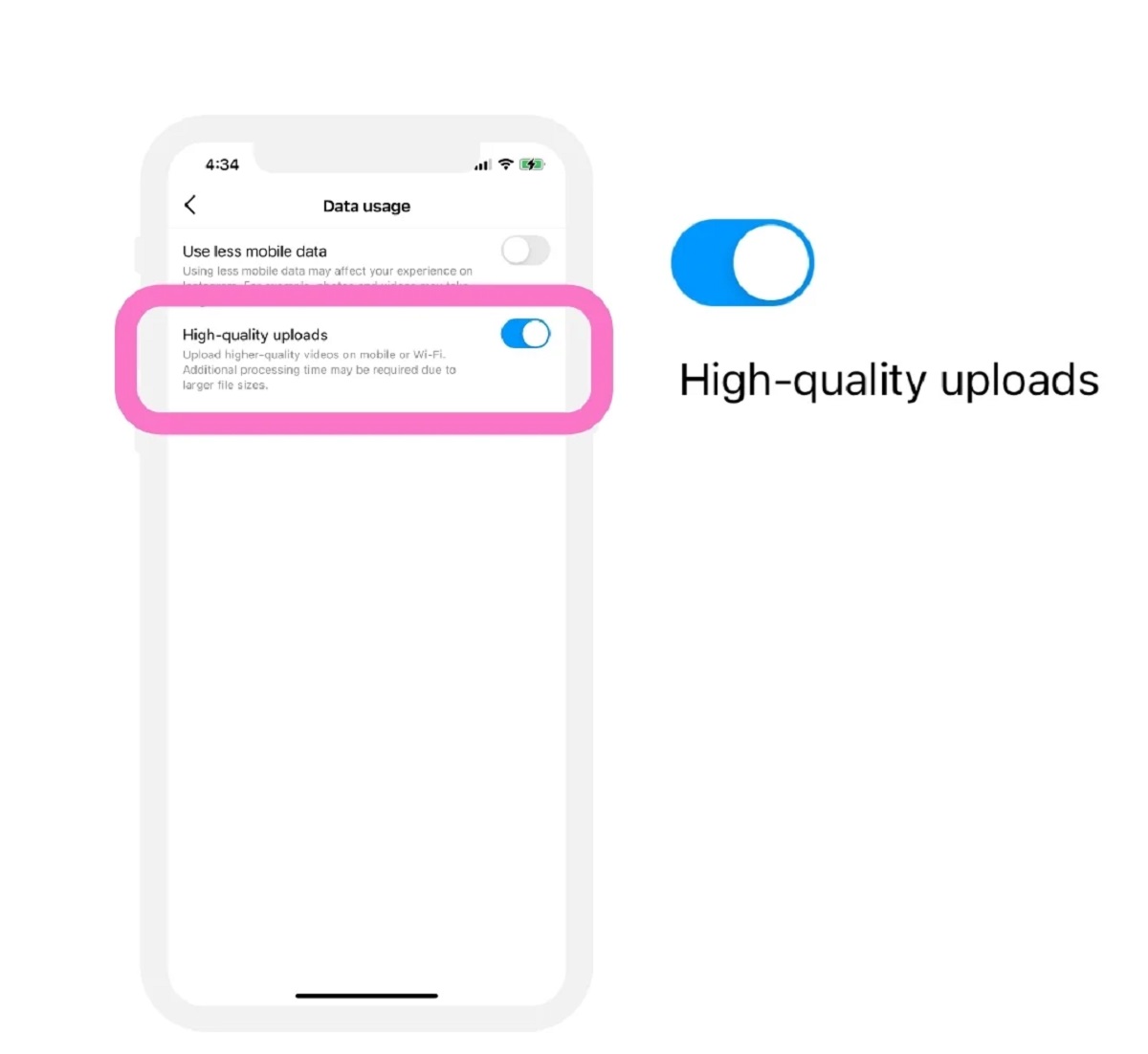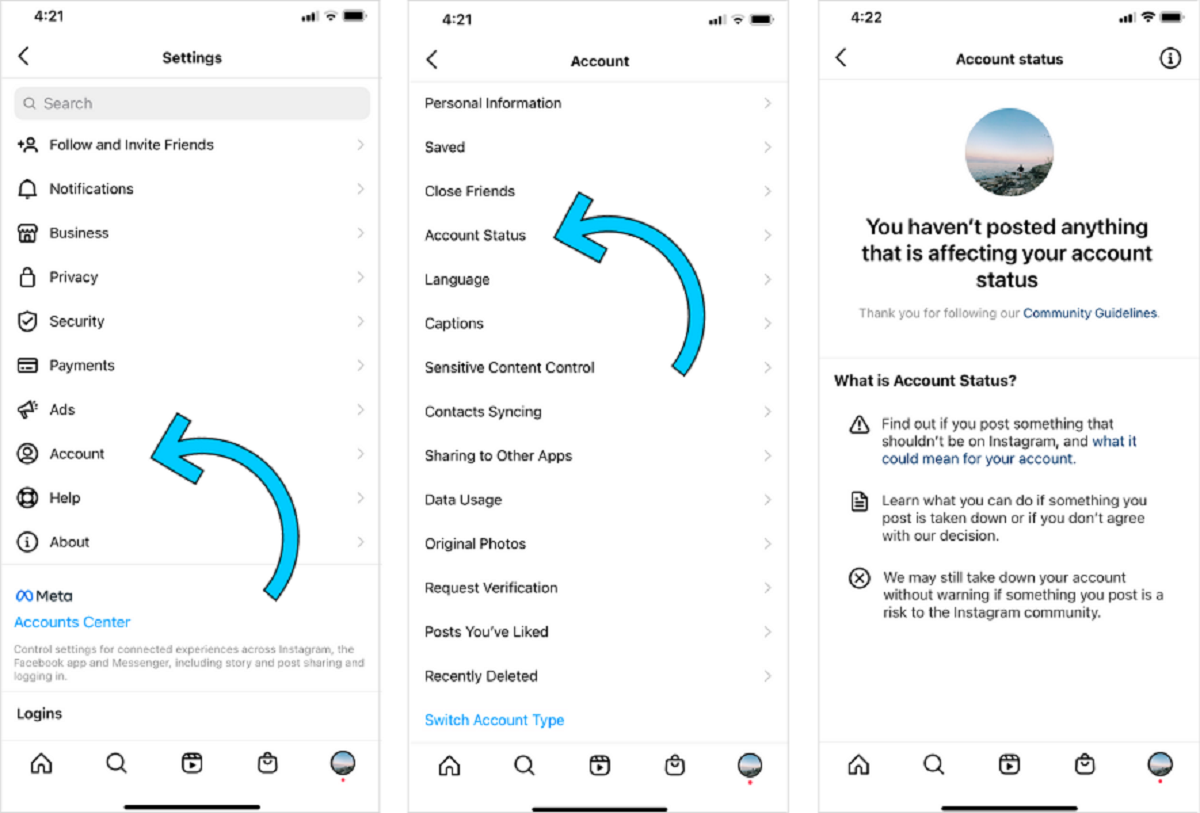Introduction
Instagram, the immensely popular social media platform, has not only revolutionized the way we connect with others but has also paved the way for individuals to earn a substantial income. With its massive user base and a thriving community of influencers, people from all walks of life have found opportunities to monetize their Instagram presence. From sponsored posts and brand collaborations to affiliate marketing and selling products, the possibilities for earning on Instagram are vast.
But how much does Instagram actually pay? And what are the factors that determine an individual’s earnings on this platform? In this article, we will delve into the world of Instagram influence and explore the various avenues through which one can earn money on the platform.
Before we dive into the nitty-gritty, it’s crucial to understand that Instagram earnings vary greatly from person to person. The amount one can earn depends on several factors, including the size of their following, engagement rates, niche, content quality, and monetization strategies. It’s important to keep these factors in mind when evaluating the potential earnings on Instagram.
So, whether you’re an aspiring Instagram influencer or simply curious about how much top Instagrammers make, this article will provide you with insights into the world of Instagram earnings. From sponsored posts and collaborations to Instagram ads and affiliate marketing, we will cover the various ways individuals can generate income through their Instagram presence.
Without further ado, let’s explore the exciting world of Instagram influence and earnings!
Understanding Instagram Influence
Instagram influence refers to the ability of an individual to sway the opinions, behaviors, and purchasing decisions of their followers on the platform. Influencers have built a loyal and engaged following by curating visually appealing content, providing valuable insights, and establishing themselves as authorities in their respective niches.
One of the key aspects of Instagram influence is the size of an individual’s following. The more followers one has, the wider their reach and potential impact. However, it’s important to note that while a large following can open doors to various opportunities, it’s not the sole determinant of an influencer’s success. Engagements, trustworthiness, and authenticity play a vital role in building a strong Instagram influence.
Engagement is another crucial factor in determining an influencer’s impact. It refers to the level of interaction and involvement from followers, such as likes, comments, and shares on their posts. High engagement rates indicate an active and loyal following, which is attractive to brands and advertisers looking to collaborate with influencers.
Moreover, influencer niches also play a significant role in determining the effectiveness of their influence. Certain niches have a more engaged audience or higher purchasing power, making them more appealing to brands. Examples of popular niches on Instagram include fashion, fitness, travel, parenting, and beauty, to name a few.
Authenticity is a key aspect of building and maintaining Instagram influence. Followers value influencers who are genuine and relatable. This means that influencers need to establish a strong personal brand and consistently produce content that aligns with their values and resonates with their audience.
In summary, Instagram influence is the ability to sway and impact the actions of followers on the platform. Size of following, engagement rates, niche, and authenticity are all important factors that contribute to an individual’s influence on Instagram.
Factors That Determine Instagram Earnings
When it comes to earning money on Instagram, several factors come into play. Understanding these factors is vital for individuals looking to monetize their Instagram presence effectively. Here are some key factors that determine Instagram earnings:
- Follower count: The number of followers an individual has on Instagram is often associated with their earning potential. Brands and advertisers are more likely to collaborate with influencers who have a substantial following as it provides them with a wider reach and exposure to their target audience.
- Engagement rate: Alongside follower count, engagement rate is a crucial metric that brands and advertisers consider when evaluating an influencer’s value. A high engagement rate indicates an active and involved audience, meaning that the influencer’s posts are resonating with their followers and creating a meaningful impact.
- Niche and target audience: The niche and target audience of an influencer play a significant role in determining their earning potential. Influencers in popular, profitable niches such as fashion, beauty, travel, and fitness often have more opportunities for collaborations and sponsorships compared to those in smaller or less monetizable niches.
- Content quality: The quality and creativity of an influencer’s content contribute to their appeal to brands and advertisers. Posting visually stunning and engaging content that aligns with the brand’s aesthetic and values can significantly increase the chances of securing sponsored partnerships and earning higher rates.
- Location and demographics: The location and demographics of an influencer’s audience can also impact their earning potential. Influencers with audiences from countries or regions where brands have a high market presence and interest may receive more collaboration opportunities.
- Monetization strategies: The strategies an influencer employs to monetize their Instagram presence also affect their earnings. Collaborating with brands for sponsored posts, running paid promotions, offering affiliate marketing opportunities, and selling products or services directly to their audience are some common monetization strategies.
It’s important to note that there isn’t a one-size-fits-all formula for determining Instagram earnings. Each influencer’s earning potential is unique and can vary based on these factors and other individual circumstances. By focusing on building a strong and engaged audience, creating high-quality content, and exploring various monetization strategies, individuals can maximize their Instagram earnings.
Sponsored Posts and Collaborations
Sponsored posts and collaborations are one of the primary ways Instagram influencers earn money on the platform. Brands and advertisers partner with influencers to create sponsored content that promotes their products or services to the influencer’s audience.
When it comes to sponsored posts, influencers are typically compensated based on various factors, including their follower count, engagement rate, niche expertise, and the scope of the collaboration. The more followers an influencer has and the higher their engagement rate, the more they can charge for sponsored posts.
Collaborations can range from a single sponsored post to long-term partnerships and ambassadorships. Some influencers are even approached to create their own collections or collaborate on product development with brands.
When collaborating with brands, it’s essential for influencers to maintain their authenticity and ensure that the sponsored content resonates with their audience. A transparent and genuine approach helps to build trust with followers and preserves the influencer’s credibility.
To secure sponsored opportunities, influencers can either actively reach out to brands or join influencer marketing platforms that connect influencers with brands. These platforms act as intermediaries, providing a space where influencers can discover collaboration opportunities and negotiate terms with brands.
It’s worth noting that sponsored posts should always disclose that the content is sponsored. This transparency is not only required by the Federal Trade Commission (FTC), but it also helps maintain the trust and integrity of the influencer’s audience.
In summary, sponsored posts and collaborations are an essential aspect of earning on Instagram. By partnering with brands and creating authentic, engaging content, influencers can generate income while providing value to their audience and helping brands reach their target market.
Engagements and Reach: The Key Metrics
Engagements and reach are two key metrics that play a crucial role in determining an Instagram influencer’s success and earning potential. These metrics provide insights into the level of interaction, visibility, and impact an influencer has on their audience.
Engagements refer to the actions taken by followers on an influencer’s posts, such as likes, comments, shares, and saves. High engagement rates indicate an active, involved audience that is genuinely interested in the influencer’s content. Brands and advertisers often prioritize influencers with high engagement rates when selecting partners for sponsored collaborations.
Engagements are not only an indication of an influencer’s popularity, but they also contribute to the visibility of their content. The more engagements a post receives, the more likely it is to appear on followers’ feeds and reach a wider audience through shares and discoverability.
It’s important for influencers to actively engage with their followers by responding to comments, asking questions, and fostering conversations. Building a strong community and nurturing relationships with followers can contribute to higher engagement rates.
Reach refers to the number of unique users who have seen an influencer’s content. It takes into account not only an influencer’s own followers but also those who discover their content through hashtags, explore pages, or shares from their followers.
Increasing reach requires a combination of factors, including posting consistent, high-quality content, using relevant and strategic hashtags, and engaging with the Instagram community. Collaborating with other influencers and participating in community challenges can also help expand an influencer’s reach.
Brands and advertisers often consider an influencer’s reach when evaluating partnership opportunities. A wider reach means more exposure for their products or services, leading to higher brand awareness and potential conversions.
Monitoring and analyzing engagement and reach metrics are crucial for influencers to understand the effectiveness of their content and strategies. Instagram’s built-in insights, as well as third-party analytics tools, provide valuable data that can guide influencers in optimizing their content and growing their influence.
In summary, engagements and reach are key metrics that indicate an influencer’s impact and potential earning potential. High engagement rates and a wide reach are attractive to brands and advertisers looking for influencers to collaborate with. By actively engaging with followers and focusing on increasing reach, influencers can enhance their influence and maximize their earning opportunities on Instagram.
Instagram Ads and Earnings
Instagram ads provide another avenue for Instagram influencers to monetize their presence on the platform. With its large user base and advanced targeting options, Instagram offers a powerful advertising platform for brands looking to reach their target audience.
As an influencer, you can earn money through Instagram ads in a couple of ways:
- Branded content ads: Branded content ads allow influencers to turn their organic branded content into sponsored ads. Brands pay influencers to promote their content to a broader audience. This enables influencers to earn money not only from the initial sponsored post but also from the subsequent ads that are created based on that post.
- Instagram Feed ads: Influencers can also collaborate with brands to create standalone Instagram feed ads. Brands may approach influencers to promote their products or services through customized ad campaigns. These ads can appear in users’ Instagram feeds as they scroll through the platform, increasing the brand’s visibility and driving potential conversions.
In both cases, the earnings from Instagram ads depend on factors such as the influencer’s audience size, engagement rate, niche, and the scope of the ad campaign. Influencers with a larger following and higher engagement rates can command higher rates for their ad placements.
Instagram provides various tools for influencers to manage and track their ad campaigns, including insights on ad reach, engagement, and performance metrics. These insights allow influencers to demonstrate the effectiveness of their ads to brands and ultimately negotiate higher rates for future campaigns.
When collaborating with brands for Instagram ads, it’s important for influencers to maintain transparency and ensure that the content aligns with their audience’s interests and expectations. Authenticity plays a pivotal role in maintaining followers’ trust and preserving the influencer’s credibility.
Advertisers are increasingly investing in Instagram ads due to the platform’s visual appeal and engaged user base. As an influencer, harnessing the power of Instagram ads can significantly boost your earnings and expand your opportunities for collaborations with brands.
In summary, Instagram ads offer influencers an additional avenue to monetize their presence on the platform. Through branded content ads and standalone feed ads, influencers can earn money by promoting brands and their products to their audience. By leveraging Instagram’s advertising tools and maintaining authenticity, influencers can maximize their earnings and establish valuable partnerships with brands.
Affiliate Marketing on Instagram
Affiliate marketing is a popular strategy for Instagram influencers to earn money by promoting products or services and earning a commission on the sales they generate. It’s a win-win situation where influencers can monetize their audience while providing value by recommending products they genuinely believe in.
To get started with affiliate marketing on Instagram, influencers need to join affiliate programs or networks that align with their niche and audience. These programs provide influencers with unique affiliate links or discount codes that they can share with their followers.
When followers make a purchase using the influencer’s affiliate link or code, the influencer receives a commission. The commission rate can vary depending on the program and the specific products or services being promoted.
Successful affiliate marketing on Instagram requires influencers to be authentic and selective in their recommendations. It’s important to only promote products or services that align with their own values and that they have personally tried and believe in.
Influencers can incorporate affiliate marketing into their Instagram content by creating dedicated posts or stories highlighting the benefits and features of the product. They can also include the affiliate link or discount code in their bio or captions to make it easily accessible for their followers.
Additionally, influencers can leverage their creativity by incorporating affiliate marketing into their content in a more seamless and organic way. For example, they can showcase the products they’re promoting in their daily routines, tutorials, or by sharing their personal experiences with them.
Building trust and maintaining transparency with followers is important in affiliate marketing. Influencers should disclose when a post or content includes affiliate links or if they are earning a commission. This transparency ensures that their audience understands the nature of the promotion and that they are making informed purchasing decisions.
Affiliate marketing on Instagram is a mutually beneficial strategy that allows influencers to earn money while providing their audience with valuable product recommendations. It offers flexibility, as influencers can choose the products or services they want to promote and customize their approach to fit their unique style and audience preferences.
In summary, affiliate marketing is an effective way for Instagram influencers to earn money by promoting products or services and earning a commission on the sales they generate. By selecting relevant products, maintaining authenticity, and building trust, influencers can successfully incorporate affiliate marketing into their content strategy and generate income on Instagram.
Selling Products and Services
Selling products and services directly to their audience is another lucrative way for Instagram influencers to generate income. By leveraging their influence and credibility, influencers can create and sell their own products, collaborate with brands on exclusive collections, or offer services that align with their expertise.
Creating and selling their own products is a popular option for influencers who have established a dedicated fan base and want to further monetize their influence. Examples include clothing lines, beauty products, books, online courses, digital downloads, and personalized merchandise.
Collaborating with brands on exclusive collections allows influencers to tap into their creativity and create unique products that resonate with their audience. These limited-edition collaborations often generate excitement and a sense of exclusivity, boosting sales and establishing the influencer as a trusted tastemaker.
In addition to physical products, influencers can also offer services that leverage their expertise and knowledge in a specific field. This can include coaching, consulting, personalized advice, or even hosting workshops or events.
When selling products or services, influencers can utilize various strategies on Instagram to drive sales and engage their audience. They can showcase and promote their offerings through aesthetically pleasing posts, engaging stories, and compelling captions that highlight the value and benefits of their products or services.
Effective marketing techniques such as limited-time offers, exclusive discounts, giveaways, and collaborations with other influencers can also help boost sales and create a sense of urgency among their audience.
Moreover, influencers can leverage Instagram’s shopping features, such as shoppable posts and tags, to provide a seamless and convenient shopping experience for their audience. By tagging products in their posts, followers can easily view product details and make purchases directly within the Instagram app.
Building a strong and engaged community is crucial when it comes to selling products or services. Influencers should foster relationships with their audience, engage in meaningful conversations, and actively address any questions or concerns. This sense of connection helps create trust and loyalty, making followers more likely to support and purchase from the influencer.
In summary, selling products and services directly to their audience provides a lucrative opportunity for Instagram influencers to monetize their influence and expertise. By creating their own products, collaborating with brands, or offering services, influencers can leverage their credibility and engage their audience in a meaningful way while generating income on Instagram.
Brand Collaborations and Sponsorships
Brand collaborations and sponsorships are a crucial part of an Instagram influencer’s revenue stream. Collaborating with brands allows influencers to leverage their influence and reach to promote products or services, while providing brands with a platform to engage with their target audience.
There are various types of brand collaborations and sponsorships that influencers can pursue:
- Sponsored posts: Influencers are often approached by brands to create sponsored content featuring their products or services. Sponsored posts can take the form of static image posts, carousel posts, or videos. Influencers are compensated for their work based on factors such as their follower count, engagement rate, and the scope of the collaboration.
- Ambassadorships: Ambassadors are long-term partnerships between influencers and brands, where the influencer becomes the face of the brand for an extended period. Ambassadorships typically involve a series of content creation in collaboration with the brand, building a consistent brand image.
- Product reviews and endorsements: Brands may send influencers their products to review and endorse on their Instagram channels. Influencers provide their honest opinions and feedback on the products, and in return, they may receive compensation, free products, or affiliate commission based on the sales driven.
- Event appearances: Influencers are often invited to attend brand events, product launches, or promotional campaigns to engage with their audience and create buzz around the brand. These appearances can involve live streams, Q&A sessions, or on-site content creation.
When entering into brand collaborations and sponsorships, it’s crucial for influencers to align themselves with brands that resonate with their audience and fit their personal brand. Collaborating with brands that share similar values and aesthetics ensures an authentic and meaningful partnership.
To secure brand collaborations and sponsorships, influencers can actively reach out to brands that align with their niche and audience or join influencer marketing platforms that connect influencers with brands seeking collaborations. These platforms provide a space for influencers to showcase their work, pitch ideas, and negotiate terms with brands.
Transparency is essential in brand collaborations. Influencers should clearly disclose any partnerships or sponsored content to their audience, adhering to the guidelines set by the Federal Trade Commission (FTC). This transparency helps maintain the trust and integrity of the influencer’s audience.
Successful brand collaborations depend on effective communication, professionalism, and delivering value to both the brand and the influencer’s audience. Influencers who can authentically integrate the brand’s messaging into their content and provide genuine recommendations are more likely to establish long-term partnerships and secure higher earnings.
In summary, brand collaborations and sponsorships provide Instagram influencers with opportunities to monetize their influence and engage with their audience in meaningful ways. By partnering with brands that align with their values and creating authentic, compelling content, influencers can build valuable partnerships and generate income on Instagram.
Understanding Instagram’s Payment Structure
Instagram influencers have various ways of receiving payment for their collaborations and sponsored content. The payment structure can vary depending on the agreement between the influencer and the brand or advertiser. Here are some common payment methods and structures utilized on Instagram:
- Flat fee: A flat fee is a fixed amount agreed upon between the influencer and the brand for a specific campaign or sponsored post. This type of payment structure provides a straightforward and predictable income for the influencer.
- Cost per thousand (CPM): CPM is a payment structure based on the number of impressions or views that a sponsored post receives. Influencers are paid a predetermined rate for every thousand views or impressions their post generates.
- Cost per engagement (CPE): CPE is a payment structure where influencers are compensated based on the number of engagements their sponsored post receives, such as likes, comments, shares, or saves. Brands assign a value to each engagement, and the influencer is paid accordingly.
- Affiliate commission: In affiliate marketing collaborations, influencers earn a commission based on the sales generated through their affiliate links or discount codes. The commission structure can vary, with influencers typically earning a percentage of the total sale amount.
- Product exchange: Instead of monetary compensation, some influencers receive free products or services in exchange for their promotion and endorsement. This payment structure is common for influencers who focus on product reviews or unboxing videos.
In addition to payment structure, influencers should consider payment terms and timelines when negotiating collaborations. It’s important to clarify how and when payment will be made, whether it’s upfront, upon completion of the campaign, or within a specified timeframe after the collaboration.
Establishing a contract or agreement that outlines the payment structure, terms, and expectations is crucial for a smooth collaboration between influencers and brands. The contract should include details such as deliverables, timeline, exclusivity agreements, disclosure requirements, and payment terms.
It’s also worth noting that payment negotiations can vary depending on factors such as the influencer’s level of experience, audience reach, engagement rates, and the brand’s budget. Experienced influencers with a large and engaged following often have more leverage in negotiating higher rates and favorable payment terms.
Monitoring and tracking payments is important for influencers to ensure they receive timely and accurate compensation. Utilizing invoicing tools, payment platforms, and maintaining clear communication with brands can help streamline payment processes.
In summary, the payment structure for Instagram influencers can vary depending on the collaboration type, engagement rates, audience size, and negotiation abilities. Understanding the various payment methods and establishing clear payment terms is crucial for influencers to ensure fair compensation for their collaborations on Instagram.
Tips to Increase Instagram Earnings
Instagram influencers are constantly seeking ways to increase their earnings and maximize their income potential. By implementing the following tips, influencers can enhance their monetization strategies and boost their Instagram earnings:
- Focus on building a highly engaged audience: Engagements are a key metric brands look for when partnering with influencers. Engage with your audience, respond to comments, and foster relationships to cultivate a loyal and active community.
- Create high-quality, visually appealing content: Invest time in creating visually stunning content that stands out. Use high-resolution images, compelling captions, and incorporate storytelling elements to captivate your audience’s attention.
- Find your niche and establish yourself as an expert: Identify a specific niche that aligns with your interests and expertise. By becoming known for a particular subject, you can attract a dedicated and engaged audience, making you more appealing to brands within that niche.
- Optimize your Instagram bio and profile: Your Instagram bio is valuable real estate that can be used to showcase your personality, highlight your expertise, and include contact information for collaboration opportunities. Make sure your profile is complete, visually appealing, and reflects your branding.
- Collaborate and network with other influencers: Collaborating with fellow influencers can expand your reach, introduce you to new followers, and attract brands looking for influencer partnerships. Seek out opportunities for guest posts, joint giveaways, or hosting Instagram Live sessions together.
- Utilize Instagram’s features: Take advantage of Instagram’s shopping features, such as shoppable tags, to make it convenient for your audience to purchase products you recommend. Experiment with new features like IGTV, Reels, and Stories to diversify your content and engage your audience in different ways.
- Stay on top of industry trends and adapt: Stay informed about the latest trends, changes in algorithms, and new features on Instagram. Being adaptable allows you to tailor your content strategy, optimize for better performance, and stay relevant to your audience and brands.
- Invest in education and professional development: Continuously seek opportunities to learn and improve your skills as an influencer. Attend webinars, take courses, or join communities where you can learn from industry experts and connect with other influencers.
- Negotiate effectively and know your worth: Understand your value as an influencer and negotiate fair compensation for your collaborations. Consider factors such as your audience size, engagement rate, niche expertise, and the scope of the campaign.
- Maintain transparency and authenticity: Building trust with your audience is vital for long-term success. Be transparent about sponsored content, disclose partnerships, and only promote products or services that align with your values and resonate with your audience.
By implementing these tips and continuously refining your approach, you can increase your Instagram earnings and establish yourself as a successful and sought-after influencer.
Conclusion
Instagram has transformed into a platform where individuals can not only express themselves but also earn a substantial income. From sponsored posts and brand collaborations to affiliate marketing and selling products, influencers have multiple avenues to monetize their Instagram presence.
The key to earning on Instagram lies in understanding the factors that determine an influencer’s success and implementing effective strategies. Factors such as follower count, engagement rate, niche expertise, content quality, and monetization methods all play a pivotal role in an influencer’s earning potential.
Sponsored posts and collaborations are a common way for influencers to earn money. By partnering with brands, influencers can promote products or services to their audience in an authentic and engaging manner. Engagements and reach are key metrics that brands consider when evaluating influencers’ value, as a highly engaged and wide-reaching audience is more attractive to potential partners.
Affiliate marketing provides influencers with the opportunity to earn a commission by promoting products or services and driving sales through their unique links or discount codes. Selling their own products or offering services is another avenue for influencers to generate income by capitalizing on their expertise and influence.
Understanding Instagram’s payment structure is crucial for influencers to negotiate fair compensation for their collaborations. From flat fees and cost-per-engagement to affiliate commissions, payment terms and structures vary depending on the influencer’s agreement with the brand.
To increase Instagram earnings, influencers should focus on building an engaged audience, creating high-quality content, finding their niche, networking with other influencers, utilizing Instagram’s features, and staying adaptable to industry trends. Transparent and authentic interactions with their audience, as well as effective negotiation skills, can also contribute to maximizing earnings.
In conclusion, Instagram provides immense earning opportunities for influencers who invest time and effort into building their brand, engaging their audience, and implementing effective monetization strategies. By understanding the Instagram landscape, influencers can leverage their influence and creativity to generate income while providing value to their audience and brand partners.

























